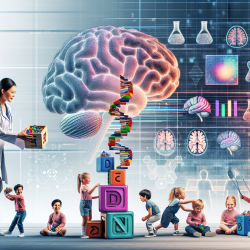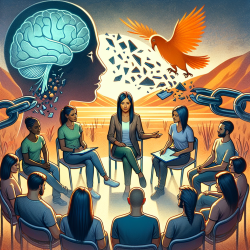Introduction
As practitioners dedicated to improving the lives of children with speech and language impairments, staying informed about the latest research is crucial. A recent study titled Dyslexia and language impairment associated genetic markers influence cortical thickness and white matter in typically developing children offers valuable insights that can enhance our therapeutic approaches. This blog will explore the study's findings and discuss how these insights can be applied in clinical practice to create better outcomes for children.
Understanding the Research
The study investigated the impact of genetic markers associated with dyslexia and language impairment on brain structures in typically developing children. Specifically, it examined the influence of DYX2 and DYX3 genetic markers on cortical thickness and white matter integrity. The findings revealed significant associations between these markers and variations in brain structure, which are critical for language and cognitive development.
Key Findings
- Markers in the DYX2 gene KIAA0319 were associated with cortical thickness in the left orbitofrontal region.
- Markers in the DYX2 gene FAM65B were linked to global fractional anisotropy, indicating white matter integrity.
- DYX3 markers showed suggestive associations with cortical thickness and volume in temporal regions, crucial for language processing.
Implications for Practice
These findings have significant implications for speech and language therapy. Understanding the genetic underpinnings of language impairments allows us to tailor interventions more effectively. Here are some ways practitioners can leverage these insights:
1. Personalized Therapy Plans
By considering a child's genetic profile, therapists can develop more personalized therapy plans. For instance, if a child has genetic markers associated with reduced cortical thickness in language-related regions, interventions can focus on activities that stimulate these areas.
2. Early Identification and Intervention
Genetic screening can help identify children at risk for dyslexia and language impairments early on. Early identification allows for timely intervention, which is crucial for mitigating the long-term impacts of these conditions.
3. Multidisciplinary Collaboration
Collaboration between geneticists, neurologists, and speech-language pathologists can lead to a more comprehensive understanding of a child's needs. This multidisciplinary approach ensures that all aspects of a child's development are addressed.
Encouraging Further Research
While the study provides valuable insights, it also highlights the need for further research. Future studies should explore the specific mechanisms by which these genetic markers influence brain structure and function. Additionally, longitudinal studies could provide a deeper understanding of how these genetic factors interact with environmental influences over time.
Conclusion
The study on genetic markers and their influence on brain structure offers a promising avenue for enhancing speech and language therapy. By integrating these insights into practice, we can create more effective, personalized interventions that improve outcomes for children. As practitioners, staying informed and encouraging further research will ensure that we continue to provide the best possible care for our young clients.
To read the original research paper, please follow this link: Dyslexia and language impairment associated genetic markers influence cortical thickness and white matter in typically developing children.










